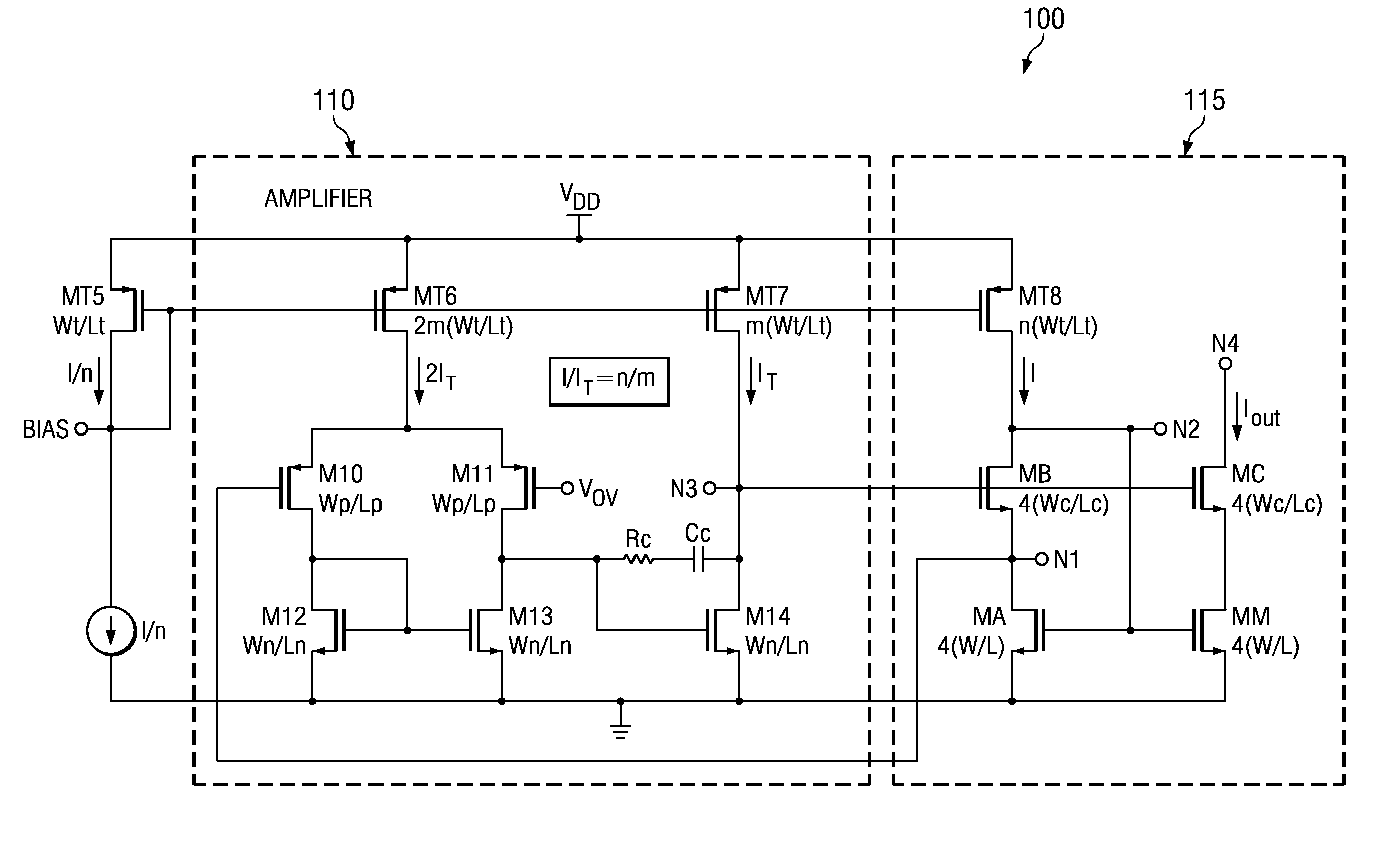Biasing scheme for low-voltage MOS cascode current mirrors
a cascode current mirror and biasing scheme technology, applied in the field of semiconductor circuits, can solve the problems of output voltage swing, limited output voltage range for which the output resistance remains high, and loss of voltage range further compounded
- Summary
- Abstract
- Description
- Claims
- Application Information
AI Technical Summary
Benefits of technology
Problems solved by technology
Method used
Image
Examples
Embodiment Construction
[0024]FIGS. 1a and 1b are discussed above in the Background of the Invention section of this document and the reader is assumed familiar with the principles of that discussion.
[0025]FIGS. 2 and 3 are circuit schematics illustrating a preferred embodiment of a CCCM, compound cascode current mirror, and its associated bias circuit. FIG. 2 dashed-box element 115 comprises a CCCM circuit and dashed-box element 110 comprises an amplifier with an input voltage labeled Vov. The Vov voltage is generated by the bias circuit 200 in FIG. 3.
[0026]In FIG. 2, an input current I for the CCCM is sourced by MT8's drain (node N2). CCCM has two current legs, an input leg comprising transistors (MA,MB) and an output leg (MM,MC). MA and MM are the two mirror transistors, which share the same Vgs voltage (gate-source voltage: gate nodes connected together at N2 and source nodes connected together at a voltage terminal such as ground). For accurate current mirroring, the Vds (drain-source voltage) of MA a...
PUM
 Login to View More
Login to View More Abstract
Description
Claims
Application Information
 Login to View More
Login to View More - R&D
- Intellectual Property
- Life Sciences
- Materials
- Tech Scout
- Unparalleled Data Quality
- Higher Quality Content
- 60% Fewer Hallucinations
Browse by: Latest US Patents, China's latest patents, Technical Efficacy Thesaurus, Application Domain, Technology Topic, Popular Technical Reports.
© 2025 PatSnap. All rights reserved.Legal|Privacy policy|Modern Slavery Act Transparency Statement|Sitemap|About US| Contact US: help@patsnap.com



